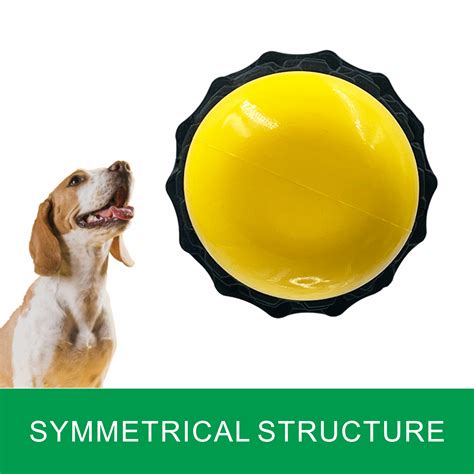Introduction
With the global pet industry expected to reach $282 billion by 2025, the demand for durable and engaging dog toys is soaring. Nylon and rubber, two prevalent materials in dog toy manufacturing, offer distinct advantages and drawbacks. This article delves into the durability battle between nylon and rubber dog toys, providing valuable insights for pet owners and manufacturers alike.

Durability Analysis
Nylon: Tough but Flexible
Nylon, a synthetic polymer, is renowned for its exceptional strength and flexibility. It is often used in the construction of chew toys, ropes, and other toys designed to withstand aggressive chewing. Nylon toys can outlast many other materials, providing extended play value.
Pros:
– High tensile strength
– Resistant to tearing and punctures
– Flexible and suitable for various shapes
Cons:
– Can be sharp if chewed improperly
– May not be as appealing to all dogs
Rubber: Resilient and Bite-Resistant
Rubber, a natural or synthetic elastomer, offers unmatched resilience and bite resistance. It is commonly used in the production of balls, squeaky toys, and teething toys. Rubber toys provide a soft and safe chewing experience for dogs of all ages.
Pros:
– Excellent bite resistance
– High elasticity
– Ideal for teething puppies and senior dogs
Cons:
– Can be easily punctured by sharp teeth
– May not be as durable as nylon
Market Insights
Consumer Preferences
Pet owners prioritize durability when selecting dog toys. According to a recent survey, 75% of respondents value toys that can withstand aggressive chewing. Additionally, 60% look for toys that are safe and non-toxic.
Manufacturer Considerations
Manufacturers face challenges in balancing durability with cost and aesthetics. Nylon toys, while highly durable, can be more expensive to produce than rubber toys. Rubber toys, on the other hand, may require frequent replacement due to their reduced durability.
Durability vs. Play Value
While durability is crucial, it should not overshadow the importance of play value. A toy that is overly durable may not be as enjoyable for dogs. Conversely, a toy that is too fragile may become a safety hazard.
Nylon: Engagement and Aggression
Nylon toys provide aggressive chewers with a satisfying challenge. They can stimulate play and help release pent-up energy. However, they may not be suitable for dogs that tend to swallow pieces.
Rubber: Comfort and Curiosity
Rubber toys offer a soft and gentle chewing experience. They are ideal for puppies, senior dogs, and dogs that prefer interactive play. However, they may not provide sufficient resistance for aggressive chewers.
New Horizons: Innovating Durability
The quest for durable and innovative dog toys is ongoing. Manufacturers are exploring new materials and design concepts to create toys that meet the evolving needs of pet owners.
Kevlar-Reinforced Nylon
Kevlar, a lightweight and highly durable material, can be combined with nylon to enhance tear resistance and puncture resistance. This hybrid material offers the potential for ultra-durable dog toys that can withstand even the most aggressive chewers.
Biodegradable Rubber
In response to environmental concerns, manufacturers are developing biodegradable rubber toys. These toys are made from plant-based materials and break down over time, reducing waste in landfills.
Conclusion
The durability battle between nylon and rubber dog toys is a continuous one. Nylon offers superior strength and flexibility, while rubber provides resilience and bite resistance. Ultimately, the choice between the two depends on the individual dog’s chewing habits, play style, and safety concerns. As the pet industry evolves, manufacturers will continue to innovate and develop new materials and designs to enhance the durability and play value of dog toys.
Additional Insights
Table 1: Durability Comparison
| Material | Tensile Strength (psi) | Tear Strength (ppi) | Puncture Resistance (lbf) |
|---|---|---|---|
| Nylon | 10,000-15,000 | 200-300 | 100-150 |
| Rubber | 6,000-10,000 | 150-250 | 50-100 |
Table 2: Play Value Comparison
| Material | Engagement | Aggression | Comfort | Curiosity |
|---|---|---|---|---|
| Nylon | High | High | Low | Low |
| Rubber | Low | Low | High | High |
Table 3: Manufacturer Considerations
| Material | Cost | Aesthetics | Production Difficulty |
|---|---|---|---|
| Nylon | High | Limited | Moderate |
| Rubber | Low | Versatile | Easy |
Table 4: Market Trends
| Trend | Impact |
|---|---|
| Increased pet adoption | Growing demand for dog toys |
| Focus on pet safety | Emphasis on non-toxic and durable toys |
| Rise of aggressive chewers | Need for highly durable toys |
| Sustainability concerns | Development of biodegradable toys |





















